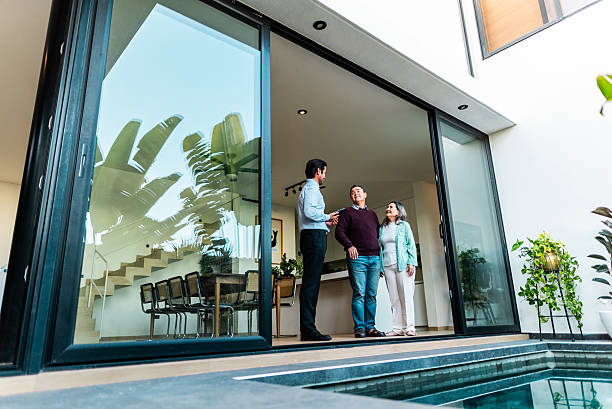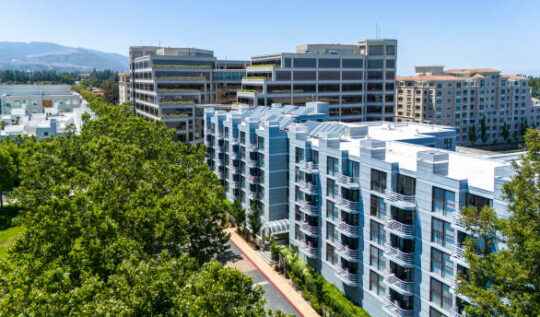Los Angeles Real Estate 2025: A No-Nonsense Guide for Buyers and Investors
The Los Angeles housing market in 2025 is shifting. After years of frenzied competition and sky-high prices, buyers are finally gaining some breathing room. Investors are recalibrating, and neighborhoods are showing mixed signals. For anyone buying, investing, or simply watching, the key question is: how do you navigate LA’s complex real estate landscape today?
Table of Contents
ToggleAt JDJ Consulting Group, we’ve spent years guiding clients through this very market. From first-time homebuyers to seasoned investors, our approach relies on understanding trends, neighborhood nuances, and actionable strategies. Here’s what you need to know.
Westside
💰 Median: $3.1M
📉 DOM: 42 days
📈 YoY: 3.2%
Eastside
💰 Median: $800K
📉 DOM: 48 days
📈 YoY: 12%
San Fernando Valley
💰 Median: $918K
📉 DOM: 38 days
📈 YoY: 2.5%
South Bay
💰 Median: $960K
📉 DOM: 29 days
📈 YoY: 13.6%
The Market at a Glance
Current median home prices in Los Angeles city hover around $876,000, with year-over-year growth roughly 2.8–3.8%. Nearly half of homes are selling below asking, reflecting a softening in buyer demand. Inventory is climbing—over 15,000 active listings in LA County—but remains tight historically.
Mortgage rates are still high at ~6.7%, keeping many buyers cautious. The market isn’t frozen, but it has moved past the panic-buying phase. Buyers now hold more leverage, especially in neighborhoods where homes are sitting longer on the market.
Days on Market (DOM) averages between 34 and 48 days, compared to near-instant sales during the 2021 frenzy. For buyers, this slowdown offers time to inspect, negotiate, and make informed decisions.

Neighborhood Breakdown
LA isn’t one market—it’s dozens of micro-markets with unique dynamics. Here’s a snapshot:
Westside (Santa Monica, Brentwood, Pacific Palisades)
Luxury demand remains, but volatility is rising. Median prices range from $1.8M to $3.5M. Some areas, like Brentwood, spiked due to wildfire displacement demand ($5.1M), while Pacific Palisades saw 20%+ dips on certain older homes.
Eastside (Lincoln Heights, Boyle Heights, El Sereno)
Affordability persists. Prices range from $750K–$850K, with gentrification pushing growth—Lincoln Heights rose over 12% YoY. Surprisingly, many homes here still sell over asking due to limited inventory.
San Fernando Valley
Offers a balance of price and stability. Median prices are $903K–$932K, with investors targeting multifamily value-add plays. Homes move relatively fast, but the market is selective.
South Bay (Torrance, Redondo Beach, Hermosa, Manhattan)
Coastal fundamentals remain strong. Torrance leads with 13.6% YoY growth. Average DOM is under 30 days, making the area competitive for both luxury buyers and investors.
San Gabriel Valley (SGV)
Mixed signals. Hot pockets include Alhambra, San Gabriel, and Temple City, especially turnkey homes under $1M. Cooling areas like Pasadena and South Pasadena require aggressive pricing or full remodeling to sell. Heavy fixers are struggling unless deeply discounted.
South LA and Harbor Areas
These areas are still relatively affordable, but buyers must be careful about repair needs, zoning restrictions, and insurance costs. Opportunities exist for those willing to dig into details.
Asset Type Insights
Different asset types behave differently in 2025:
Multifamily: Occupancy exceeds 95%. Class B and C properties are popular. Rent growth remains steady, especially in working-class areas.
Single-Family Homes: Smaller homes dipped slightly, while 4-bedroom homes saw 4.5% appreciation. Build-to-rent trends are emerging in the Inland Empire.
Condos: Downtown high-rises are oversupplied, with vacancies around 13%. Lower-tier condos in working-class neighborhoods outperform.
Commercial: Office space struggles with over 31% vacancy downtown. Industrial remains strong, while retail is steady in grocery-anchored centers.
First-Time Buyers: How to Win
For those buying to live, not invest, 2025 offers an unusual advantage: breathing room. Bidding wars are no longer automatic, but success requires preparation:
Get fully underwritten early—don’t rely on pre-approvals alone.
Inspect everything, especially older homes with potential retrofits.
Expand your search to Eastside and Valley neighborhoods for more value.
Consider ADUs—rental income or extra family space can make a huge difference.
House hack if possible—live in one unit, rent the others. This reduces housing costs and builds equity faster.
Patience, due diligence, and education outperform urgency or FOMO in today’s cycle.
House Hacking: The Secret Weapon
House hacking is gaining traction in LA. The concept is simple: buy a 2–4 unit property, live in one unit, and rent the others. Tenants cover part—or all—of your mortgage. Advantages include:
Lower monthly housing costs
Building equity while living in your home
Potential for rental income to cover property expenses
For example, a 2-unit property in the Eastside can allow a buyer to live in one unit while the other generates enough rent to offset mortgage and insurance. FHA and low-down-payment conventional loans make this strategy accessible with as little as 3.5–5% down.
The key is careful underwriting: projected rental income usually counts as 70% toward qualifying income, helping buyers get approved even in high-rate environments.
Investor Strategies
Investors should tailor their approach based on budget and goals:
Under $1M: Focus on single-family flips, gentrifying Eastside neighborhoods, BRRRR strategies in rent control-exempt areas, or ADU plays.
$1M–$5M: Target Class B multifamily with cosmetic rehab needs, light industrial near logistics hubs, or mixed-use in transit zones.
$5M+: Trophy coastal assets, development deals with entitlements, or Opportunity Zone investments.
Investors must watch out for insurance spikes, rent control restrictions, wildfire rebuild zones, and permitting delays. Refinancing risk during high-rate cycles can also impact BRRRR strategies.
💰 LA Mortgage & Rent Estimator
Negotiation and Leverage
With buyers now holding more leverage, strategy matters more than ever. Some tips from seasoned professionals:
Focus on inspection periods rather than chasing list price.
Request repairs, credits, or rate buydowns during negotiations.
Check permits and potential SB9 lot-split opportunities.
Factor in zoning and rent control before closing.
Lock insurance early, particularly in wildfire-prone areas.
Negotiation isn’t about lowballing—it’s about leveraging transparency, timing, and diligence to secure the best deal.
Risk Factors
Even in a “buyer-friendly” market, risks remain:
Insurance costs: Carriers are leaving wildfire zones, raising premiums.
Construction delays: Permitting and plan check delays can impact investment timelines.
Tenant issues: Landlording requires time, patience, and financial buffers.
Neighborhood specificity: Micro-location matters more than city averages.
Successful buyers and investors mitigate these risks through preparation, local knowledge, and professional guidance.
The Bottom Line
LA’s market in 2025 is nuanced. It rewards patience, research, and strategy. Buyers are no longer competing blindly, and investors must be selective. Opportunities exist, but only for those willing to do the homework.
For first-time buyers, house hacking and strategic ADU use can dramatically reduce costs. Investors must align asset type with neighborhood dynamics, carefully evaluate risks, and be ready for slow-moving fixers or zoning hurdles.
Patience and due diligence beat urgency. Understand your numbers, know your neighborhood, and plan for long-term growth rather than chasing short-term frenzy.
In short, LA has shifted from seller frenzy to strategic opportunity. For those willing to dig in, 2025 is not a market to fear—it’s a market to navigate smartly.
🚀 Stay Ahead in LA Real Estate 2025
Sign up for our newsletter or request a consultation to get curated insights.
Get Insights NowFAQs: Los Angeles Real Estate 2025
What is the median home price in Los Angeles in 2025?
The median home price in Los Angeles city in 2025 is around $876,000. This reflects a slower growth pace compared to previous years, with year-over-year appreciation roughly 2.8–3.8%. Prices vary widely by neighborhood, from affordable Eastside areas to high-end Westside districts. Buyers should always look at neighborhood-specific comps rather than city averages, as micro-markets can behave very differently.
How long are homes staying on the market in LA right now?
Days on Market (DOM) currently averages between 34 and 48 days across the city. This is a significant increase from the near-instant sales seen during the 2021 frenzy. Homes that are properly priced and move-in ready still sell quickly, while fixers or poorly presented properties sit longer. For buyers, this gives time to inspect carefully and negotiate.
Which neighborhoods are best for first-time buyers in 2025?
Eastside areas like Lincoln Heights, Boyle Heights, and El Sereno offer relative affordability, with median prices from $750K–$850K. The San Fernando Valley also provides a balance of stability and inventory. Buyers should consider neighborhood growth trends, school ratings, and access to public transit when selecting locations. Expanding searches beyond traditional Westside areas can unlock real value.
What is house hacking, and how does it work in LA?
House hacking involves buying a 2–4 unit property, living in one unit, and renting out the others. Rental income can cover part or all of your mortgage, reducing monthly housing costs. FHA and low-down-payment loans make this strategy accessible with just 3.5–5% down. Proper underwriting is key—lenders usually count about 70% of projected rental income toward qualifying income. House hacking can build equity faster while making LA housing more affordable.
Are single-family homes appreciating in LA in 2025?
Yes, but growth is uneven. Smaller single-family homes have slightly dipped in price, while 4-bedroom homes saw 4.5% appreciation. Build-to-rent is emerging in parts of the Inland Empire, and luxury Westside homes remain volatile. Investors and buyers should carefully consider home condition, micro-location, and neighborhood dynamics rather than rely on citywide averages.
How is the multifamily market performing in Los Angeles?
Multifamily properties are strong, with occupancy rates above 95%. Class B and C units provide solid value, especially in working-class neighborhoods. Rent growth remains steady, making these properties attractive for investors. Areas like the San Fernando Valley and gentrifying Eastside neighborhoods are popular for value-add plays. Investors should factor in local rent control rules and property management challenges.
Are condos still a good investment in 2025?
Downtown LA condos are oversupplied, with vacancy rates near 13%. High-rise luxury units face price pressure, while lower-tier condos in working-class areas perform better. Buyers must evaluate building condition, HOA fees, and location carefully. Condos may not appreciate as quickly as single-family homes, but they can provide steady rental income in the right micro-market.
What are the biggest risks for buyers and investors in LA now?
Key risks include:
Insurance costs: wildfire zones have higher premiums.
Construction delays: permitting and plan check times can be long.
Tenant issues: managing rental units requires patience and buffers for emergencies.
Neighborhood specificity: micro-location matters more than citywide averages.
Prepared buyers mitigate risks with professional guidance, thorough inspection, and careful underwriting.
How can buyers gain leverage in negotiations?
With homes sitting longer, buyers hold more power. Strategies include:
Requesting repairs, credits, or rate buydowns during inspection.
Checking permits and SB9 lot-split potential for future development.
Locking insurance early, especially in wildfire-prone areas.
Understanding zoning, rent control, and other restrictions.
Leverage comes from research, timing, and transparency, not lowballing.
What is the outlook for LA real estate in 2025?
The market is no longer frenzied but still presents strategic opportunities. Buyers benefit from slower pacing, and investors can find value in multifamily, ADUs, and select single-family homes. Success depends on patience, diligent research, and neighborhood knowledge. Short-term gains are less likely; long-term growth favors those willing to understand trends, manage risks, and plan strategically.





